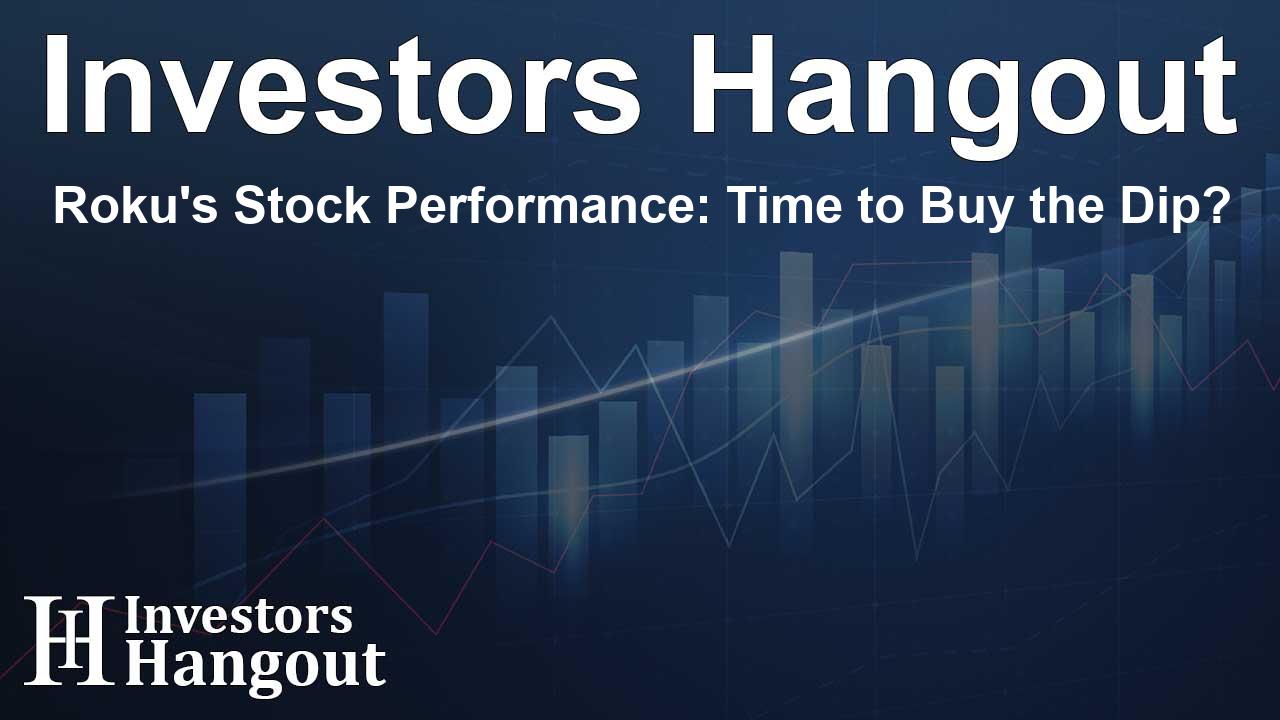Roku: A Streaming Platform in Transition
Roku (NASDAQ: ROKU) has experienced significant shifts since its remarkable rise during the pandemic. Initially, shares saw an impressive 530% increase from their March 2020 lows to their peak in July 2021, driven largely by heightened consumer engagement with streaming services while staying at home. However, the subsequent market adjustments have relegated Roku's stock to an 86% decline from its peak price, raising the question: is it time to consider this growth stock as a potential rebound opportunity?
Riding the Streaming Wave
Slow growth rates have pressured Roku's stock in recent years. During 2020 and 2021, the company recorded revenue increases exceeding 55%. However, as consumer behavior began to normalize post-pandemic, sustaining such growth rates proved challenging.
Resilience in Revenue Growth
Despite the stock's performance, Roku's financial metrics show promise. In the latest quarter, Roku reported a 14% increase in revenue, and management anticipates an 11% rise in the upcoming third quarter. Moreover, the company added two million active accounts in Q2, bringing the total to 83.6 million, underlining its continuing expansion.
Market Leadership and User Engagement
Roku maintains a significant market share among smart-TV operating system providers, not only in the U.S. but also in Canada and Mexico. The platform boasts impressive user engagement, with an astonishing 30.1 billion hours of streamed content in the last three months. On average, each Roku account dedicates about four hours a day to its services.
Adaptability and Content Strategy
Roku's agnostic approach to content partnerships positions it well within the streaming landscape. Unlike many competitors, Roku does not invest heavily in producing original content, allowing it to capitalize on the growing trend of cord-cutting. As consumers move away from traditional cable subscriptions, Roku is poised to aggregate various streaming services into a single user-friendly interface.
Advertising Trends and Economic Impact
Investors remain aware of the cyclical nature of the digital advertising market. Economic downturns often lead marketing executives to reduce spending, as witnessed in 2022 and 2023. However, the long-term trend suggests that advertising dollars will increasingly flow to streaming platforms, reaffirming Roku's strategic advantage.
Evaluating Risks and Financial Health
While Roku is a leading player in the streaming space, it faces several notable risks. A primary concern is the company's inability to generate positive net income. Although management cites positive adjusted EBITDA over several quarters, investors should note that this metric does not account for all expenses and can be subject to manipulation.
Concerns Regarding Future Profitability
The company has not yet proven its business model's financial sustainability under generally accepted accounting principles. Even though Roku has successfully grown revenue, user base, and engagement on the back of streaming market trends, investors should maintain critical awareness of its position within the industry.
Negotiation Power with Content Providers
Roku's dependency on leading content providers, such as major streaming services, poses its own set of challenges. Companies like Netflix and Alphabet's YouTube hold powerful positions and may limit ad inventory shared with Roku. This dynamic indicates that content publishers retain significant negotiation leverage over the platform.
Despite these risks, Roku's current price-to-sales ratio of 2.6 appears attractive compared to its historical average of 9.5, making it a compelling consideration for potential investors seeking to buy the dip on this growth stock.
Should You Invest in Roku Now?
Before deciding on investing $1,000 in Roku, investors must assess the company’s trajectory and market position given its recent volatility. Analyzing Roku's strategic direction, potential for future growth, and the broader market environment will be crucial in determining whether it represents an ideal investment opportunity at this time.
Frequently Asked Questions
What is Roku's current market situation?
Roku's stock has fallen significantly since its peak in July 2021, trading at an 86% lower price, but has recently posted a 14% revenue increase.
How many active accounts does Roku have?
The company reached a total of 83.6 million active accounts as of Q2.
What is Roku's competitive advantage?
Roku’s user-friendly platform aggregates various streaming services without heavy investments in original content, positioning it favorably amid the cord-cutting trend.
What are the key risks associated with investing in Roku?
The main risks include the company’s ongoing lack of profitability and dependence on the goodwill of major content providers for advertising and content availability.
Is now a good time to buy Roku stock?
With a low price-to-sales ratio compared to historical averages, many investors consider it a potential opportunity to buy the dip, though careful analysis is advised.
About Investors Hangout
Investors Hangout is a leading online stock forum for financial discussion and learning, offering a wide range of free tools and resources. It draws in traders of all levels, who exchange market knowledge, investigate trading tactics, and keep an eye on industry developments in real time. Featuring financial articles, stock message boards, quotes, charts, company profiles, and live news updates. Through cooperative learning and a wealth of informational resources, it helps users from novices creating their first portfolios to experts honing their techniques. Join Investors Hangout today: https://investorshangout.com/
Disclaimer: The content of this article is solely for general informational purposes only; it does not represent legal, financial, or investment advice. Investors Hangout does not offer financial advice; the author is not a licensed financial advisor. Consult a qualified advisor before making any financial or investment decisions based on this article. The author's interpretation of publicly available data shapes the opinions presented here; as a result, they should not be taken as advice to purchase, sell, or hold any securities mentioned or any other investments. The author does not guarantee the accuracy, completeness, or timeliness of any material, providing it "as is." Information and market conditions may change; past performance is not indicative of future outcomes. If any of the material offered here is inaccurate, please contact us for corrections.
